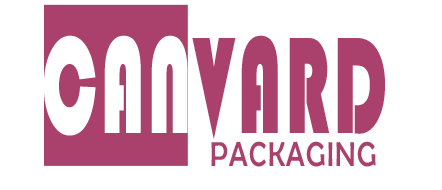Plastic bottles manufacturing process step by step introduction
The raw materials of cosmetic plastic bottles must meet the relevant national standards, and now the quality level of many plastic bottle raw materials is food grade, especially the pharmaceutical bottles must meet the requirements of medicine and hygiene. There are four common raw materials for plastic bottles, polyester (PET), polypropylene (PP), acrylonitrile-butadiene-styrene (ABS), polyethylene (PE), etc.
What are plastic bottles made of?
As mentioned above, plastic bottles are usually made of PET, PP, ABS, and PE. PE is often referred to as LDPE (Low Density Polyethylene) or HDPE (High Density Polyethylene). We’ll look at how each material affects the bottle manufacturing process below.
PET (Polyethylene Terephthalate)
Usually PET bottles are transparent, but some bottles can be made into opaque or colorful bottles after adding color masterbatch, PET bottles can be used in various grades on the market, such as daily chemical series of washing bottles, eye cream bottles, toner bottles and medicine bottles in facial personal care, etc. It has the characteristics of high temperature resistance, high strength, low density, chemical corrosion resistance, no heavy metals, non-toxic and tasteless, and good weather resistance.
PP (Polypropylene)
PP bottles are generally translucent, because PP bottles are not completely transparent, which makes it have a certain degree of light-proof properties, suitable for products that need to be protected from light. Secondly, the translucent packaging of PP bottles has some transparent characteristics, which allows consumers to see the inside of the product, especially some food products can be attractive. In addition, PP bottles are temperature-resistant, which is suitable for hot canned packaging of some beverages and foods. The density is small, and the strength, hardness and heat resistance are better than those of high-density polyethylene, but it becomes brittle at low temperatures, is not wear-resistant, and is easy to age. However, it can be modified by adding corresponding additives, and the modified can achieve the performance level of HDPE.
AS (Styrene-acrylonitrile copolymer)
It is a hard and transparent material, brittle (there is a crisp sound when tapping), good transparency, and can be in direct contact with cosmetics and food. It can be molded by injection molding, extrusion, blow molding, and vacuum forming, and is generally the material of the bottle body in ordinary lotion bottles and vacuum bottles, and can also be made into small-capacity cream bottles, which are transparent, such as cream bottles, powder boxes, and eyeshadow boxes.
LDPE/HDPE (Low- and High-Density Polyethylene)
Polyethylene is divided into two kinds: low-density polyethylene LDPE and high-density polyethylene HDPE, low-density polyethylene LDPE is suitable for injection molded products, blow molded hollow products, LDPE bottles are more flexible than HDPE bottles, and are suitable for some items that need to be squeezed for packaging. It is commonly found in shampoos, shower gels and other fields. High-density polyethylene HDPE has high heat resistance, cold resistance, and outstanding chemical and physical properties, and is mainly used in pharmaceutical plastic bottles, suitable for liquid, powder and other different types of goods packaging. It is commonly found in oils, detergents and other fields.
How are plastic bottles made?
Blow molding
This method is to put thermoplastic pellets into a plasticizer to make plastic pellets, and then feed them into a mold to form hollow containers and bottles under the action of heat and blowing. The blow molding method is suitable for the manufacture of hollow containers and bottles, and its advantages are fast manufacturing speed and low cost, but the disadvantage is that the product has thin walls and is easy to deform.
Injection molding
Injection molding is in which a thermoplastic material is heated and injected into a mold, cooled under pressure and cured. This method is suitable for the manufacture of various plastic products, such as plastic cups, plastic buckets, etc. The advantages of the injection molding method are high forming accuracy and good product appearance, but its disadvantages are long production line, high cost, and relatively long production time.
Extrusion method
Extrusion is to heat and soften the thermoplastic material, pass it through an extruder to form a column, and then cut and shape it into a product. This method is suitable for the manufacture of plastic pipes, door and window frames, etc., and its advantages are high production efficiency and low cost, but the surface roughness is higher and the finished product accuracy is lower.
Compression molding
The compression molding method is to heat and soften the acrylic sheet, and then cut it, mold, glue and other processes to make the product. This method is suitable for the manufacture of transparent plastic products, such as cosmetic bottles, display frames, etc. Its advantages are high quality, good transparency and high gloss, but the cost is relatively high and the production cycle is long.


